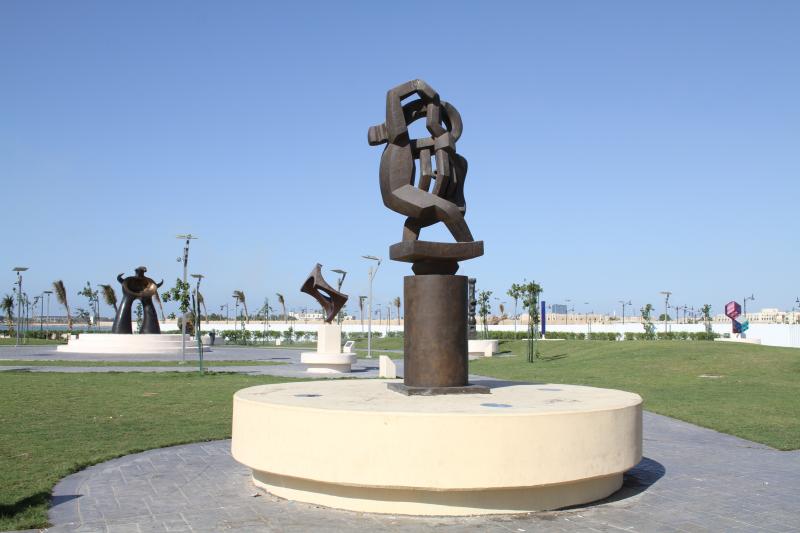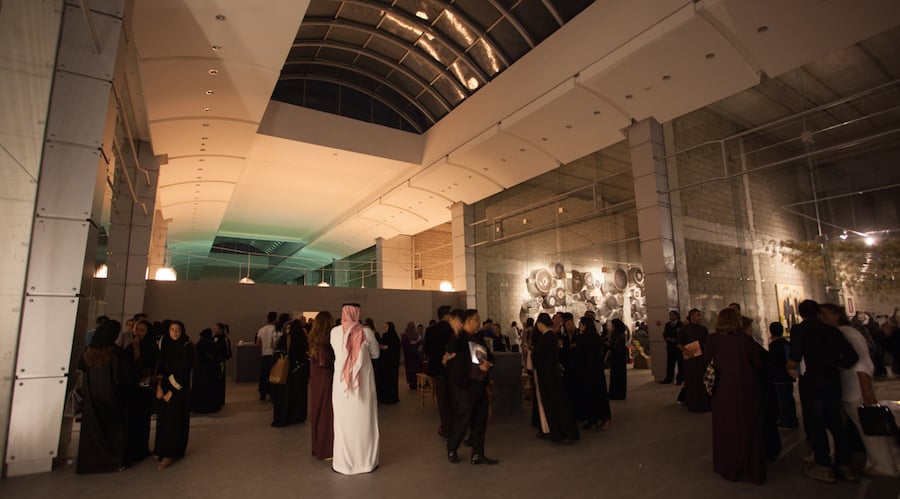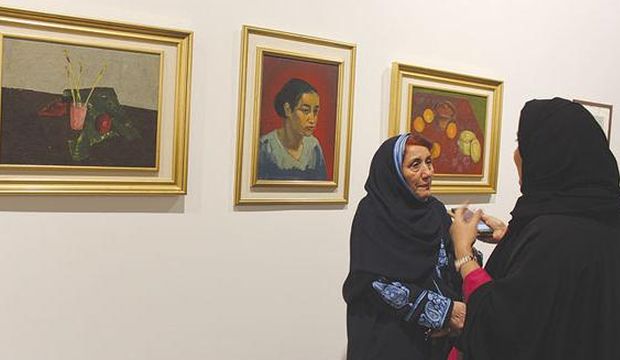Reviews
Are Islam and Contemporary Art Incompatible? I Went to Saudi Arabia to Find Out
Art in the Islamic kingdom has lived in the shadows and still does.

Art in the Islamic kingdom has lived in the shadows and still does.

Benjamin Genocchio

Are Islam and contemporary art incompatible?
It’s a provocative question, I know, but one that feels increasingly relevant in the wake of multiplying news announcements about Islamic extremists killing cartoonists, journalists, and artists.
The truth is that this sort of thing has been going on forever in parts of the Islamic world and, of course, assassination has been a time-tried popular method used the world over by the mafia, drug traffickers, government spies, and corrupt officials who want to remove those who get in the way of powerful interests. In short, assassination is not confined to religious extremists.
What assassins are all trying to do is silence free expression, free speech—a value and a right in many democracies. We can say more or less what we want, even if it offends people. There is no right not to be offended in a democracy. But in a society governed by Islamic law, the standards of attitude and reference are different and therefore the line governing what is and isn’t acceptable is differently drawn.
So, I wanted to see firsthand what a visual arts festival looks like in one of the world’s most fundamentalist Muslim nations. Last month, with this in mind, I went to ‘21,39’ Jeddah Arts, the second edition of the Jeddah Arts Festival in Saudi Arabia, just for the weekend. It’s a long way to go from New York for two days, I know, but it was a mission of hope: I figured that if contemporary art could live there, then ipso facto—or, at the very least, conceivably—it could survive anywhere in the Muslim world.

Opening of the “Fast Forward” exhibition tracing the history of Saudi art at the Jeddah Arts Festival 2015.
I recalled, upon landing, that there had been a moment in the late 1970s when things looked as though they would turn out differently. The oil boom had seen a concerted local effort to bring art to Jeddah’s public spaces, and the city acquired hundreds of international sculptures, which today still stud boulevards, roundabouts, and streets. Henry Moore, Jean Arp, Alexander Calder, Joan Miró, and Victor Vasarely, among others, are represented in the collection, with the best clustered together nicely in a small grassy area along the Corniche, a popular public promenade.
Declining oil resources and the static, intransigent political situation mean such visionary initiatives are unlikely to be repeated for now. That said, Jeddah is the most liberal city in Saudi Arabia, or, at least, more open than Riyadh, the political capital, or the religious and historical centers of Mecca and Medina. A flourishing port city established in pre-Islamic times, Jeddah remains today a center of the Red Sea trade.
In Saudi Arabia, however, “liberal” is a relative concept. What we are talking about here is a backwards society, almost medieval, a colorless world of conformity in which religious law is so strict that playing music in public is illegal. In the absence of popular legitimacy, the alliance between church and state obliges the ruling Saudi monarchy to enforce a strict code of Islamic law, making social, cultural, and economic liberation difficult. This also leads to, among other things, an appalling discrimination against women, who, in all but limited instances, are prevented from working, driving, walking around, or even opening their own bank accounts. In order to travel, a woman needs permission from a man.
A few days before I arrived in Jeddah, Raif Badawi, a local blogger and co-founder of a website called the Liberal Saudi Network, was flogged. Badawi, who is male, not female, was arrested on June 17, 2012, and had been sentenced to 1000 lashes—20 sessions of 50—and a 10-year prison term for criticizing the regime, as well as “for “blasphemous phrases on his Facebook page and disobedience to his father,” according to a report on the website of Human Rights Watch. The flogging was halted following an international outcry, but not before the bloodied and unconscious blogger was rushed to hospital. He is still in prison.
Nonetheless, free expression, which is to say contemporary art, does exist here. It is not thriving by any means; beyond school-level educational initiatives, there is very little in the way of government-funded infrastructure for art and artists. The city’s galleries and nonprofit exhibition spaces of note can be counted on one hand and are fostered and supported through the efforts of a few passionate, wealthy, and politically plugged-in individuals with a sense of national pride and the connections and clout to navigate the myriad of restrictions on movement, behavior, and free expression.
Make no mistake: There is no market for art here and no real audience beyond the walled compounds of the wealthy guarded by security guards. Still, Hafez Gallery is important, as is Athr Gallery and Ayyam Gallery; all three are professional and show art and artists versed in contemporary art theory and styles.They are all, also, nested quietly in shopping malls and commercial buildings, away from public view.
Better known and talented artists include Abdulnasser Gharem, Abdulaziz Ashour, Ibrahim Abu Musmar, and Ahmed Mater, whose artwork Magnetism (2012) is the subject of a plagiarism lawsuit against watchmaker Omega. They get by here, making work that gestures at things, vaguely, avoiding open discussion or possibly problematic depiction of anything relating to nudity or politics or religion.

Ahmed Mater, Magnetism (2012), Omega advertisement, courtesy of the artist.
Images via: Quotidien de l’Art
The official title of the Jeddah Arts Festival is inspired by the geographic coordinates of the city (21.5433°N, 39.1728°E). The event has a double mission: it is intended primarily to raise awareness of the local art scene while encouraging the appreciation and revival of the city’s historical old town architecture. A body of wealthy Saudi art patrons populating the Saudi Art Council organizes and funds the event, under the patronage of Princess Jawaher bint Majed bin Abdulaziz Al-Saud, founder of the Al-Mansouria Foundation and legendary Saudi patron of the arts.
Many of the Saudi Art Council members reside abroad, or spend extended periods of time outside of the Gulf, especially in London. They are sophisticated, worldly, smart people and bring a familiar and welcome sense of professionalism and real passion to the Jeddah Arts Festival program. But step outside their tasteful and cultivated private milieu and into the streets and you very quickly get a sense of two worlds: one is Western, cultured, and sophisticated, filled with people who travel, collect art, mingle freely, and serve (though it is officially illegal in the kingdom) alcohol in their homes; the other world is closed, poor, segregated, and repressed, and this is the world most readily on public view and portrayed in Western media. Contemporary art exists in Saudi in this space between public appearance and exclusive private action, popped on top of an uneducated and repressed society like a Maraschino cherry on a piece of cake.
Jeddah Arts Festival is a curious mix of exhibitions, workshops, seminars, and architectural tours. This year’s event was marred by the death of King Abdullah, only hours after the official festival launch. When the announcement of the king’s death was made, around midnight, the music was appropriately turned down at the party I was attending.
The king’s death essentially shut down the festivities as the country went into days of mandated national mourning. But quietly, anyway, foreign visitors and journalists got bussed around to see shows, listen to talks, and see the traditional architecture.

Saudi artist Safiya bin Zagr (left) with her work at the ‘21,39’ exhibition in Jeddah.
Photo: © Asharq Al-Awsat.
The highlight of the festival is “Fast Forward,” an exhibition in a barn-like space adjacent to a shopping center. Part artwork, part documentation, such as photographs, catalogues, and text, it traces the history of the visual arts in Saudi beginning in the 1960s, when scholarships were awarded to local artists to study abroad. Overall, it’s an important visionary show.
Based on the imagery and educational material, the narrative of the history of Saudi art is fragmentary and episodic, recounting a story that is actually less about evolution and collective appreciation of art in the country than it is about the occasional ad hoc successes and, mostly, frustrations of an unheralded talented, dedicated, and passionate group of individuals. Here exhibition curator Basha Al-Shroogi (director of Cuadro Fine Art Gallery in Dubai) is to be highly commended for both his diligent research and championing of key historical players, though from a Western point of view it can be hard to understand the relevance and importance of specific pictures, especially those that are painted in an appropriated modernist style.
But the real takeaway is that contemporary art in the Islamic kingdom has lived in the shadows and more or less still does. For the moment, I’ll take shadows over utter darkness.